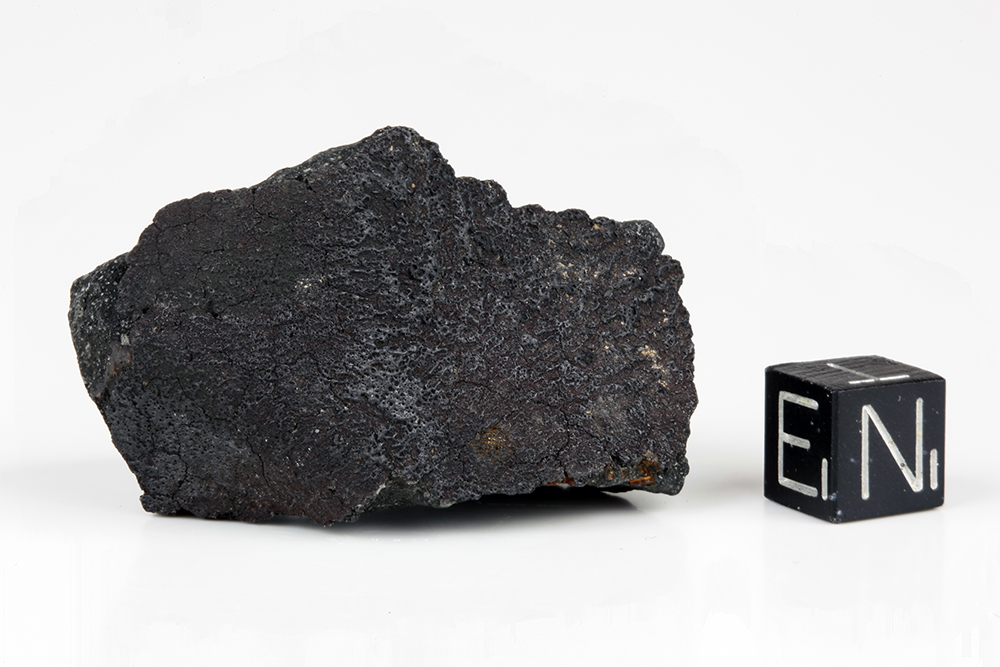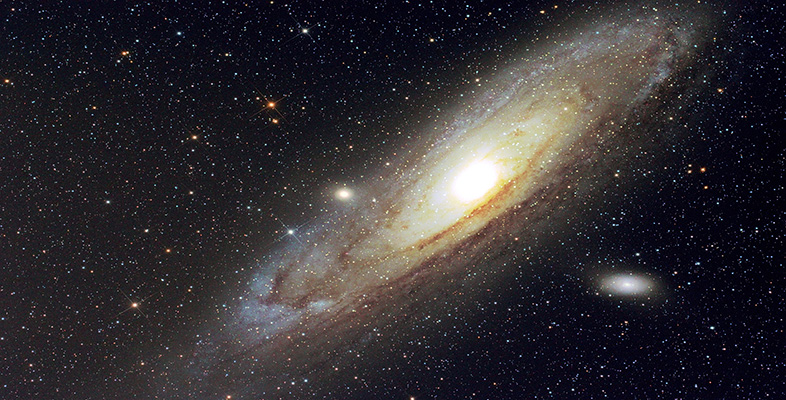One is the Japanese Space Agency’s (JAXA) Hayabusa2 and the other is NASA’s OSIRIS-REx. In October 2020, OSIRIS-REx is set to hoover up 2 kg of rocks from the surface of the diamond-shaped, carbon-rich asteroid called Bennu, around which it is currently orbiting. It is set to return to Earth with its bounty of space samples in 2023. Hayabusa2 has already visited its asteroid, Ryugu, having successfully collected rocky samples and now on its way back to Earth, scheduled to land in Australia in December this year. Samples from both missions will be closely investigated by scientists and laboratories around the world to help piece together the story of our origins.
When studying pieces of asteroids that have been collected from space and returned to Earth, scientists know exactly where the sample came from, and how it’s related to all the other rocks on the asteroid. Once back on Earth, scientists can also carefully control what happens to those samples, keeping them stored in specially designed research facilities that minimise their exposure to the terrestrial atmosphere. But going into space is expensive, and technically challenging. The OSIRIS-REx and Hayabusa missions are some of the first to attempt returning rocky samples to Earth since humans went to the Moon some fifty years ago.
Meteorites often come from asteroids, but they can also come from planets and possibly even comets.
Fortunately, space sends us rocks for free. These are known as meteorites and have fallen to Earth for billions of years. Meteorites often originate from asteroids, but they can also come from comets and even planets. They give scientists the chance to sample a huge variety of space rocks, without leaving the safe confines of planet Earth. But these samples represent a challenge for scientists. The meteorites found on the Earth’s surface are biased towards those space rocks that are on favourable Earth-crossing orbits. We’re also more likely to receive meteorites from bodies close to us than those that reside in the outer reaches of the solar system.
 Meteorite Murchison carbonaceous chondrite from Australia
Earth’s atmosphere, however, is an issue for any space rock looking to find its way to Earth. It acts as a filter, favouring the survival of rocky and metallic meteors. But there can be further problems after such rocks land on Earth. Most meteorites fall in remote areas resulting in them not being discovered by humans for thousands of years, during which time they are exposed to our terrestrial environment. Some meteorites, such as the carbonaceous chondrites, act like a sponge, sucking up moisture from the air which, in turn, modifies their composition. Nevertheless, carbonaceous chondrites are important as they can tell us about the conditions at the birth of the solar system and the delivery of water and organics to the early Earth.
Meteorite Murchison carbonaceous chondrite from Australia
Earth’s atmosphere, however, is an issue for any space rock looking to find its way to Earth. It acts as a filter, favouring the survival of rocky and metallic meteors. But there can be further problems after such rocks land on Earth. Most meteorites fall in remote areas resulting in them not being discovered by humans for thousands of years, during which time they are exposed to our terrestrial environment. Some meteorites, such as the carbonaceous chondrites, act like a sponge, sucking up moisture from the air which, in turn, modifies their composition. Nevertheless, carbonaceous chondrites are important as they can tell us about the conditions at the birth of the solar system and the delivery of water and organics to the early Earth.
The question is: how do you spot a meteorite in the wild? Imagine being given a rock to study. From looking at it, you could probably describe its colour and the size of the crystals. It might feel heavy or light for its size or is maybe magnetic. If you had a laboratory, you might be able to work out its chemical composition and when it formed. All of these factors are useful in figuring out the origin of rocks. But without knowing exactly where the rock came from, would you have a complete picture about its 4.5-billion-year history? Could you tell if it was a piece of a much larger geological structure, or whether instead, it was a rare type of rock in the area where it was collected?
This is the challenge scientists face with meteorites. If we’re lucky, we can see meteorites arriving as bright fireballs in the sky and can use their speed and direction to calculate their original orbit around the Sun. But out of a worldwide collection of over 60,000 meteorites, this has only been possible for fewer than around thirty. For the vast majority, we don’t know where exactly in the solar system they came from, making it difficult to fully understand their history.
Meteorites provide a valuable resource for understanding how our planet, and those around us, formed. Yet, sending spacecraft out to sample specific objects really steps the science up a gear. Such missions will pave the way for human exploration of asteroids and space far beyond the Moon. Asteroids could even be mined for their resources in the future; precious metals and water that could be as useful on Earth as in space.
 Explore more articles in this collection by clicking on the banner above
Explore more articles in this collection by clicking on the banner above


Rate and Review
Rate this article
Review this article
Log into OpenLearn to leave reviews and join in the conversation.
Article reviews